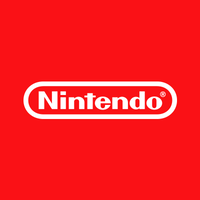Embracing the Female Gaming Revolution
by on 10th Dec 2019 in News


In our latest guest post Vanessa Goff-Yu, marketing director at in-game advertising platform Bidstack, takes an optimistic look at the sizeable female gamer demographics, the rise of the strong female game character, and the role brands can play in aiding female representation across games.
The news that Natalie Portman will take on the lead role in the fourth Thor film in 2021 wasn’t just the start of Marvel’s next phase; it was part of a wider radical shift in female representation across the entertainment industry.
Strong women are taking over from the stereotypical and often over-sexualised characters of the past: replacing lycra with armour — see Gal Gadot’s reimagined Wonder Woman — and the much discussed Ghostbusters reboot. And these changes aren’t confined to films. Gaming, previously criticised for its unrealistic avatars, is undergoing an evolution of its own that’s empowering female players and reflects a move towards a more inclusive and diverse gaming culture.
The gender-diverse reboot
Probably the best example of character transformation in gaming is Lara Croft. Over the last 23 years, Lara has come a long way from the skimpy outfit and exaggerated figure of her Tomb Raider debut: becoming a multi-layered warrior with lifelike proportions and practical clothing. Elsewhere, games such as The Last of Us, Half Life 2 and Horizon Zero Dawn also feature heroines with their own impressive abilities, and emotional depth.
Reasons behind this transition vary. It’s partly due to progression in societal attitudes and awareness of the harm ‘fantasy’ female characters can do, with research linking video game exposure to sexism. But changing demographics are a major factor too — the archetype of gamers as teenage boys locked in their rooms is significantly out of date. As the popularity of gaming has expanded, so has player diversity. It’s estimated that almost half (46%) are now women, and a similar proportion (42%) of 55-64 year olds in the UK are gamers.
Currently female gamers are more likely to play via apps on mobile, as opposed to triple-A titles on console or PC, but this could be about to change. The introduction of cloud-gaming platforms such as Google Stadia and Microsoft xCloud are set to do for gaming what Netflix has done for movies and TV, and what Spotify has done for music. In the same way these streaming services have broadened viewing and listening habits, cloud gaming will make gaming content more readily accessible across devices. Female gamers will be able to play esports mega-titles like DOTA2, League of Legends and CS:GO on mobile, further aided by the introduction of 5G networks.
There are already signs that the industry is recognising the growing importance of the female gamer, with Nintendo’s recent Switch ad clearly aimed at young girls – which it realises are the next generation of gamers. And as more women enter areas of gaming once considered ‘men only’, such as esports, the need for developers — and their brand partners — to provide relatable and inspiring avatars will continue to increase.

Levelling up esports play
Mainstream interest in esports is skyrocketing, with high profile showdowns such as the Fortnite World Cup attracting more than two million global viewers. To date, both esports play and spectatorship has been male dominated, but there are signs this won’t be the case for long. While women currently account for 30.4% of esports audiences, that figure is a considerable increase on the 23.9% viewership recorded in 2016. Additionally, the skills of female pro players are gaining greater recognition and publicity: this year has seen renowned esports team FaZe sign their first female pro player, Gen.G announce plans for an all-female Fortnite team and real-world sportswoman Chiquita Evans become the first woman on the NBA 2K team.
The esports playing field is levelling out and forward-thinking brands have already started to place themselves ahead of the curve through engaging female representation. So far, top prize goes to Wendy’s for their “Keeping Fornite Fresh” initiative. Using an in-game character bearing a striking similarity to Wendy, the brand launched a relentless campaign to destroy freezers in-game as a symbol of frozen beef and encouraged other community members to join in; an approach that proved so influential the game developers eventually switched freezers for fresh facilities, and Wendy’s picked up an influencer award at Cannes Lions.
The gaming sector at large and brand integrations are heading in the right direction. But there is still considerable ground to cover before the gaming revolution leads to total parity on and behind the screen. It will be crucial to keep creating games and branded features across all gaming platforms that not only include inspiring female characters, but also embrace the fact they’re here to stay.
Ad TechAdvertisingAudienceesportsGamingMobilePlayersTargetingUncategorizedUser Acquisition







Follow TheGamingEconomy